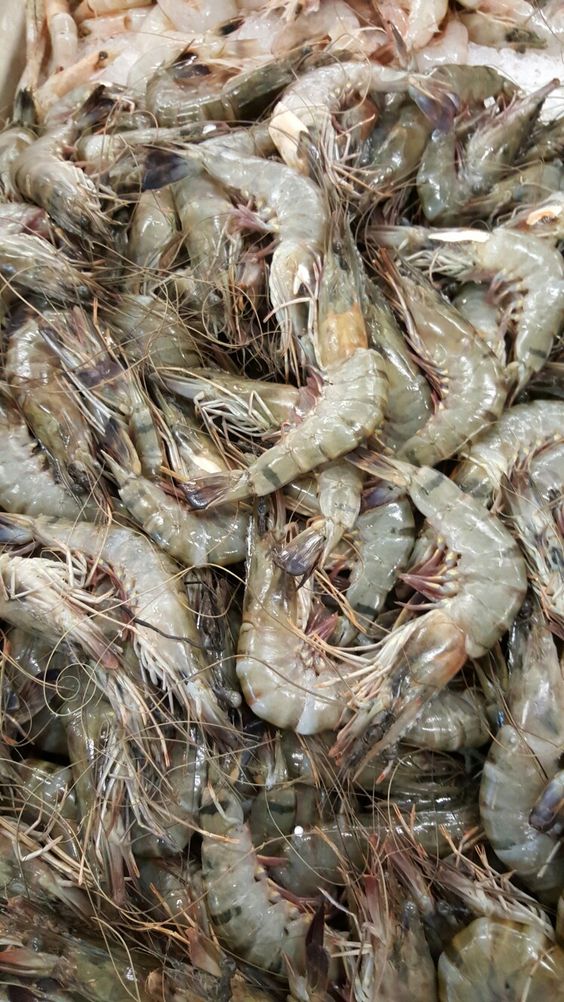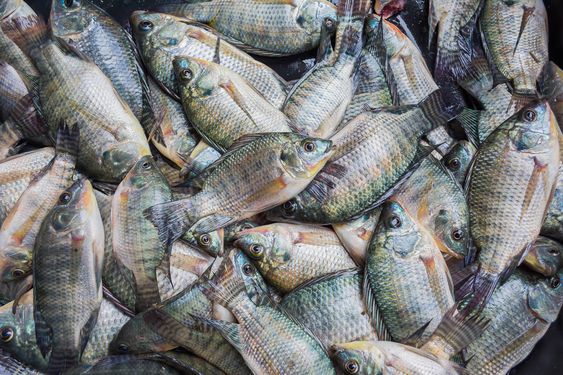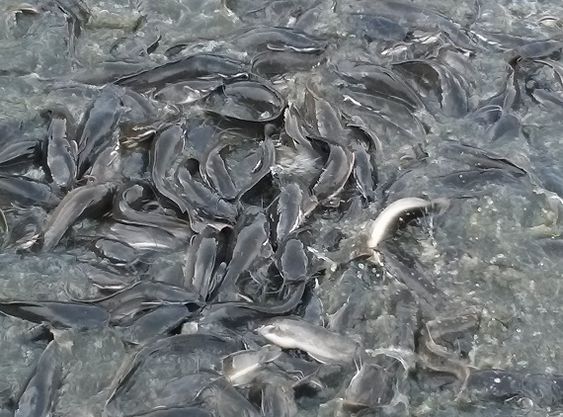Gourami Fish Management: Essential Strategies for Success in 2024
Gourami Fish Management, a group of freshwater species known for their vibrant colors and peaceful demeanor, have become one of the most popular choices for aquaculture and aquarium hobbyists alike. Their adaptability, low maintenance needs, and aesthetic appeal make them ideal for both large-scale fish farming and home aquariums. The demand for Gourami continues to rise globally due to its various benefits, including being a source of protein, a popular ornamental fish, and contributing to sustainable aquaculture practices.
The Gourami fish are native to Southeast Asia, predominantly found in countries such as Thailand, Indonesia, Malaysia, and Vietnam. They are typically found in slow-moving rivers, swamps, and rice paddies. The first types of Gourami to be introduced to the global market were the Giant Gourami (Osphronemus goramy) and the Dwarf Gourami (Trichogaster lalius), which led to the rise of the ornamental fish industry. Over time, due to their hardy nature and adaptability, several species of Gourami have been introduced worldwide for aquaculture purposes.
Contents
Types of Gourami Fish
There are several species of Gourami that are popular among both fish farmers and aquarium hobbyists. The most commonly bred and managed species include:
- Dwarf Gourami (Trichogaster lalius): Known for its bright colors and small size, Dwarf Gourami are one of the most popular aquarium fish.
- Pearl Gourami (Trichopodus leerii): Characterized by its white spots and elegant appearance, the Pearl Gourami is highly sought after for aquariums.
- Giant Gourami (Osphronemus goramy): As the name suggests, this is a large species used primarily in fish farming for consumption.
- Blue Gourami (Trichopodus trichopterus): Known for its easy adaptability and peaceful nature, this species is common in aquaculture and aquarium management.
The Benefits of Gourami Fish Management
Ornamental Appeal
The Gourami fish are prized for their bright colors, unique patterns, and tranquil nature. These characteristics make them a favorite among aquarium hobbyists who want to add vibrant aquatic life to their tanks. Because they come in various shapes, sizes, and colors, Gourami are perfect for creating diverse, visually appealing aquascapes.
Contribution to Sustainable Aquaculture
Gourami fish farming contributes significantly to sustainable aquaculture practices. Their natural habitat allows them to thrive in low-oxygen environments, and they are relatively resistant to changes in water quality, making them more sustainable than some other freshwater fish species. Their efficient growth rate, particularly in species like the Giant Gourami, ensures that farmers can cultivate them for food while maintaining environmental sustainability.
Economic Benefits
Gourami fish farming can be highly profitable due to the high demand for both food and ornamental fish. The ease with which Gourami can be bred and maintained makes them cost-effective for farmers. As a high-protein fish, they are a good choice for aquaculture in regions where other protein sources may be limited or expensive. Additionally, because of their ornamental value, Gourami can fetch high prices in the aquarium trade.

the Goals of Gourami Fish Management
Preservation of Species
One of the core goals of Gourami Fish Management is the preservation and proliferation of various species of Gourami. Due to habitat destruction and environmental changes, some species are at risk in the wild. Proper management ensures that these species can thrive, both in commercial settings and in home aquariums.
Profitability in Aquaculture
Another key objective is achieving profitability in aquaculture. Gourami fish, particularly the Giant Gourami, are an essential food source in Southeast Asia. Efficient breeding and growth management allow fish farmers to produce a high yield while keeping costs low.
Enhancing Aesthetic Experiences
In the aquarium world, the primary goal of Gourami management is to create an aesthetically pleasing environment. This involves carefully selecting species that complement one another in terms of color, size, and temperament while ensuring they have the appropriate water conditions, food, and care.
Key Concepts and Ideas in Gourami Fish Management
Ideal Water Conditions
Maintaining optimal water quality is paramount in Gourami Fish Management. While Gourami are labyrinth fish, allowing them to breathe air directly and thrive in low-oxygen environments, they still require a clean and stable aquatic habitat. Key water parameters for Gourami include:
- Temperature: The ideal range is between 22°C to 28°C (72°F to 82°F), with slight variations depending on the specific species. Maintaining this temperature ensures metabolic processes function efficiently, promoting growth and overall health.
- pH Level: A pH range of 6.0 to 7.5 is best for Gourami. Regular testing and adjustment are necessary, as fluctuations can lead to stress and health issues.
- Hardness: Water hardness should be maintained between 5 to 20 dGH (degrees of general hardness). This parameter affects the osmotic balance and well-being of the fish.
Regular water changes—typically 25% to 50% every week—along with proper filtration, are essential to prevent the buildup of harmful toxins such as ammonia and nitrites. These compounds can compromise the fish’s health, leading to disease or death.
Proper Nutrition
Providing a balanced diet is crucial for the health and growth of Gourami. In their natural habitat, these fish are omnivorous, consuming small insects, larvae, and plant material. In captivity, their diet should include:
- High-quality pellets or flakes specifically formulated for freshwater fish to ensure they receive essential nutrients.
- Frozen or live foods like bloodworms, brine shrimp, and daphnia, which serve as excellent protein sources that promote healthy growth.
- Vegetable-based options such as blanched spinach and algae wafers, which are particularly beneficial for species like the Giant Gourami.
Feeding should occur 1-2 times daily, offering only as much food as the fish can consume within 2-3 minutes to prevent overfeeding and maintain water quality.
Breeding Techniques
Successful breeding of Gourami involves creating specific conditions that encourage mating behaviors. Most Gourami species are bubble nest builders, requiring careful management:
- Temperature should be maintained at the higher end of the species’ range, ideally between 26°C and 28°C, to stimulate spawning behavior.
- Isolation of breeding pairs in a separate tank can significantly reduce stress levels, increasing the chances of successful mating.
- Floating plants or appropriate substrates should be introduced to facilitate nest building, especially for Dwarf Gourami.
After laying and fertilizing eggs, the male typically guards the nest until the fry hatch, which usually occurs within 24 to 48 hours. This protective behavior is critical for ensuring the survival of the young fish during their vulnerable early stages.

Topic Suggestions for In-depth Study
There are several key areas that would benefit from further exploration within Gourami Fish Management:
Water Quality Parameters for Optimal Growth
A more detailed investigation into the impact of various water parameters (temperature, pH, hardness, ammonia levels) on the health and growth rate of different Gourami species can provide better management guidelines for aquaculture and home aquariums.
Common Diseases in Gourami Fish
Gourami Fish Management Research on the common diseases affecting Gourami, such as bacterial infections, fungal infections, and parasites, along with their prevention and treatment strategies, could be essential for both commercial and hobbyist fishkeepers.
Breeding and Hatchery Techniques
Gourami Fish Management In-depth exploration of modern breeding techniques, such as artificial insemination or hormonal stimulation, can improve hatchery success rates and provide solutions for species that are difficult to breed in captivity.
Sustainable Aquaculture Practices with Gourami Fish
Gourami Fish Management,As the demand for sustainable practices in aquaculture increases, understanding how Gourami can fit into eco-friendly systems, such as integrated aquaculture-agriculture, can help reduce the environmental footprint of fish farming.
Advantages of Gourami Fish Management
Cost-Effective
Gourami Fish Management are relatively inexpensive to breed and maintain, making them cost-effective for both commercial farmers and home aquarists. Their omnivorous diet means they can eat a wide range of affordable foods, and their ability to tolerate low oxygen levels means that expensive aeration systems are not always necessary.
Easy to Maintain
Gourami Fish Management are hardy fish that do not require specialized care compared to other freshwater species. This makes them an excellent choice for beginners in the aquarium hobby and for fish farmers looking for low-maintenance species.
High Demand in Aquaculture and Aquarium Trade
Gourami Fish Management,There is consistently high demand for Gourami fish both for food consumption, especially in Southeast Asia, and for ornamental purposes in the global aquarium trade. This ensures a stable market for farmers and hobbyists alike.
Challenges in Gourami Fish Management
While there are many advantages to managing Gourami fish, several challenges can arise that require careful consideration and management strategies.
Disease Management
Gourami Fish Management,One of the most significant challenges in Gourami Fish Management is disease prevention and treatment. Common diseases that affect Gourami include:
- Ichthyophthirius multifiliis (Ich): This parasitic infection manifests as white spots on the skin and gills, leading to respiratory distress and potential death if untreated. Early detection and treatment with appropriate medications are crucial.
- Fin Rot: Caused by poor water quality and stress, fin rot can lead to the deterioration of the fish’s fins and body. Maintaining good water quality and minimizing stress are essential for prevention.
- Gastrointestinal Issues: Gourami can suffer from issues related to their diet, such as constipation or bloating. Providing a varied diet with adequate plant material can help prevent these conditions.
Environmental Concerns
Gourami Fish Management Aquaculture practices for Gourami must consider environmental sustainability. Overfishing, habitat destruction, and pollution can impact wild populations and their habitats. Implementing responsible farming practices, such as:
- Reducing chemical use in aquaculture operations
- Recycling water and minimizing waste
- Restoration of natural habitats for wild Gourami populations
These practices can help ensure the long-term viability of both farmed and wild Gourami fish.
Competition and Overcrowding
Gourami Fish Management In both aquaculture and home aquariums, overcrowding can lead to stress, aggression, and increased susceptibility to disease. It is crucial to:
- Monitor stocking densities carefully to ensure that each fish has adequate space.
- Separate aggressive species from more peaceful Gourami varieties to maintain harmony within the tank.
Using larger tanks and providing plenty of hiding spots can help reduce stress and competition among fish.

Advanced Techniques in Gourami Fish Management
To further enhance the effectiveness of Gourami Fish Management, aquarists and fish farmers can adopt several advanced techniques that promote health, breeding success, and sustainability.
1. Genetic Selection and Breeding Programs
Gourami Fish Management,Implementing genetic selection can significantly improve the health and resilience of Gourami populations. Breeders can focus on specific traits such as growth rate, disease resistance, and color variations to develop strains that thrive better in captivity.
- Selective Breeding: By carefully selecting breeding pairs based on desirable traits, farmers can create offspring that exhibit these characteristics. This approach not only improves the overall quality of the fish but also enhances the economic value of the stock.
- Hybridization: Some aquarists explore hybridization to produce unique color morphs or to combine the strengths of different Gourami species. This method requires careful management to avoid negative health impacts.
2. Use of Technology
Gourami Fish Management,Technological advancements can optimize various aspects of Gourami fish management, from monitoring water quality to streamlining feeding processes.
- Automated Systems: Automated feeders and water quality sensors can help maintain optimal conditions without the need for constant human intervention. These systems can be programmed to feed fish at regular intervals and monitor parameters like pH, ammonia, and temperature, sending alerts if conditions go outside of the desired range.
- Aquaculture Software: Utilizing specialized software can help farmers track growth rates, health records, and breeding histories. This data-driven approach can inform better management decisions and enhance productivity.
3. Aquaponics Integration
Gourami Fish Management,Integrating Gourami fish farming with aquaponics systems can create a sustainable ecosystem. Aquaponics combines aquaculture (raising fish) with hydroponics (growing plants without soil), creating a symbiotic relationship.
- Nutrient Cycling: The waste produced by Gourami provides nutrients for the plants, while the plants help filter and clean the water for the fish. This closed-loop system reduces the need for artificial fertilizers and promotes a more sustainable way to raise both fish and crops.
- Diverse Production: By growing plants alongside Gourami, farmers can diversify their income streams. Vegetables and herbs grown in aquaponics systems can provide additional profit while maximizing the use of space and resources.
4. Educating and Training
Gourami Fish Management,Training and educating both new and experienced aquarists about best practices in Gourami management can significantly improve outcomes. Workshops, online courses, and community outreach can help spread knowledge about:
- Water Quality Management: Understanding the importance of maintaining optimal water conditions and how to troubleshoot common issues can empower fish keepers.
- Disease Prevention: Teaching about the signs of common diseases, their prevention, and treatment options can reduce loss and improve the overall health of the fish.
- Breeding Techniques: Providing resources and support for successful breeding can help hobbyists and farmers maximize their efforts in cultivating Gourami.
Gourami Fish Management,The management of Gourami fish presents an exciting opportunity for both aquarists and fish farmers. By embracing a holistic approach that includes sustainable practices, advanced techniques, and community engagement, we can enhance the quality and resilience of Gourami populations while meeting the demands of consumers.






